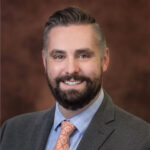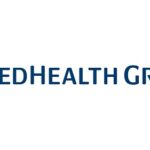.jpg) According to recent research, a mere 5 percent of the population accounts for 50 percent of the country’s healthcare costs. This disparity adds up to higher costs and lower profit margins for healthcare providers, many of whom are struggling to stay afloat. In addition, the recent national crisis surrounding the inadequacy of Ebola caregiving revealed the glaring inefficacies in training protocols for hospital workers. What needs to be done to correct these discrepancies?
According to recent research, a mere 5 percent of the population accounts for 50 percent of the country’s healthcare costs. This disparity adds up to higher costs and lower profit margins for healthcare providers, many of whom are struggling to stay afloat. In addition, the recent national crisis surrounding the inadequacy of Ebola caregiving revealed the glaring inefficacies in training protocols for hospital workers. What needs to be done to correct these discrepancies?While it may seem that these issues are separate ones in a wild tangle of problematic and unsolvable disparities, in truth, they are all different heads of the same monster—the lack of interoperability and connectivity in the greater healthcare system. While EHRs were created to begin to address the needs of having everyone—clinician, caregiver, administrator, provider, insurance agency-etc.— on the same digital page, clinicians and administrators alike have found that EHRs add to their workload and aren’t addressing the larger needs of professional training, increased patient engagement, and changing payment models.
The solution is already here. Forward-thinking providers are quickly realizing that in order to stay current with federal mandates brought on by the Affordable Care Act, they need a solution that offers real-time coordination between clinicians, care-givers and patients; a solution that encourages patient engagement, and utilizes cutting-edge data analytics, but also goes a step further by providing recommendations and action plans that create opportunities for improvement and learning. TopCare powered by BlenderTM is an example of a software solution that can weave together several data sources into a data-driven solution. With a system like TopCare, training and compliance, patient registries, dashboards for better interoperability and communication, health records, WorkspacesTM for shared best practices, timely patient interventions, and recommended actions for clinician, patient and administrator are all available in a single-point-of-access.
But what if the EHRs many providers have already invested in are not meeting providers’ needs? Fortunately, the TopCareTM solution integrates with existing EHR systems. While EHRs usually do a great job of collecting the data, TopCare makes that data useful, filling in the gaps that EHRs leave behind, creating action plans based on that data, and improving the quality of collaboration and care, all while keeping costs down.
The post-EHR Landscape is one that requires healthcare providers to think beyond the EHRs they thought would be the answer to their every need. Having an EHR system in place is a good start, but it is only the first step in a process of bringing all of the disparate elements of top quality care together. Systems that have gone beyond EHRs, like TopCare, make provider relationship management, and ultimately, patient care, the top priority. For providers that have been struggling with the monstrous headaches caused by the unfitness of their EHR to handle all of their problems, this should come as a relief. Ensuring that systems are interoperable between providers, clinicians, insurance agencies and patients, keeps costs down because workflow is smoother, communication between caregivers is timely and relevant, and patients are healthier. And that is something to celebrate.


























